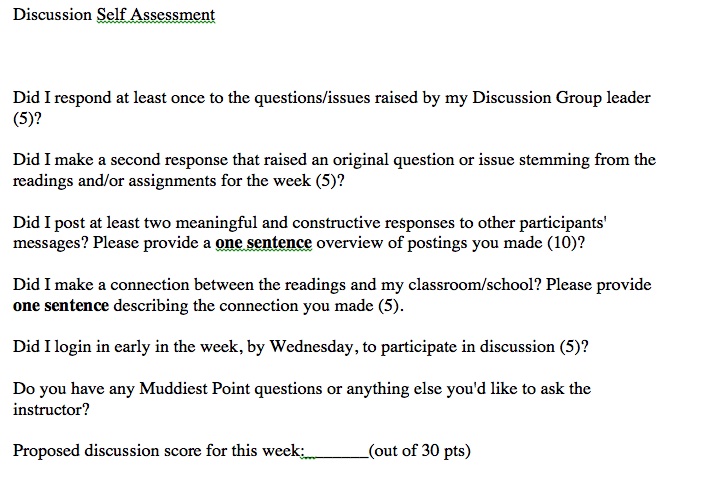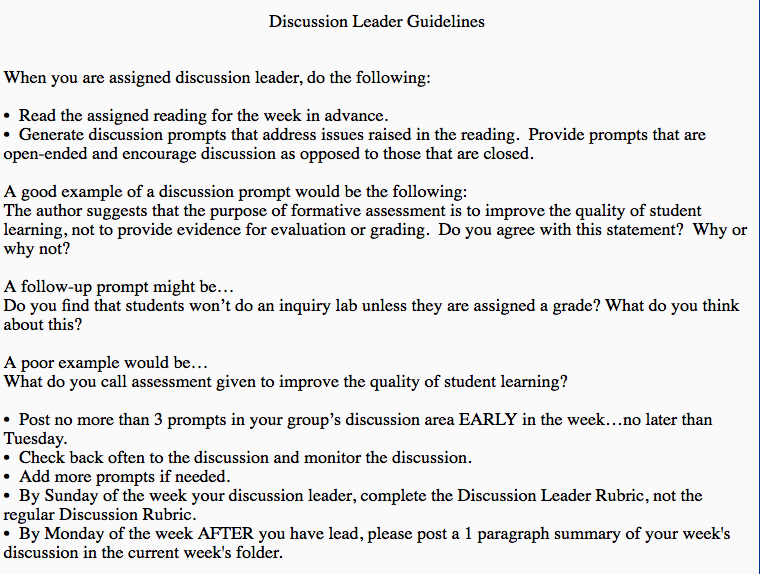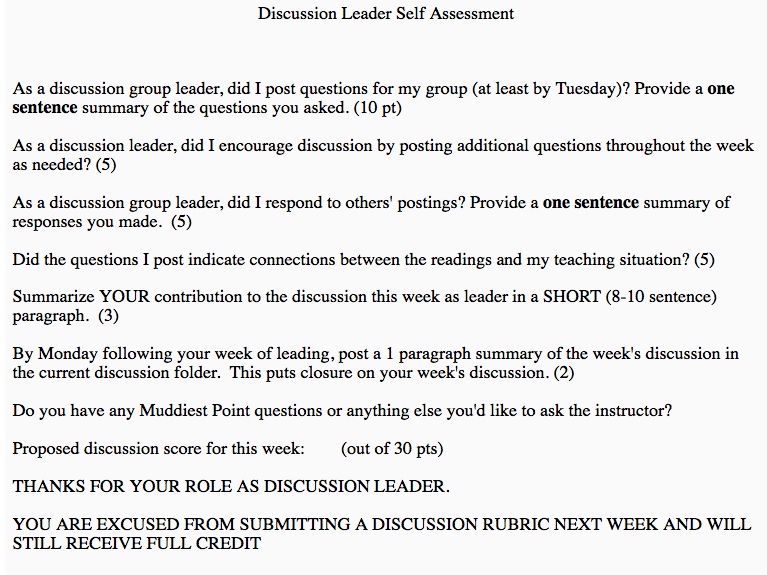Online Discussion Video and Resources
One of the challenges of online instruction is what to do about discussions. There are most likely as many approaches to discussions as there are instructors. At a minimum, online discussions should serve to accomplish several goals including student reflection
about the course content and new learning; provide opportunities for collaboration; asking questions and receiving answers to questions; and creating online community. I structure online discussions with these goals in mind. In order to create the online discussion norms I want for my courses, I model the online discussion techniques I expect during the first few weeks of a course. I post open-ended prompts to which the students reply. I facilitate the discussion throughout the week to guide the discussion and keep the discussion moving in the direction of the prompts. I require that students are online early in the week. My week runs from Monday morning to Sunday midnight, and students are required to post a reply to the weekly prompt no later than Wednesday. In addition to posting a reply, students are required to ask a question, raise an original point and/or connect a post to the week’s assignment or their professional experience. Later in the week, they are required to post a 2nd response. Students are held accountable to the discussion posting through a self-assessment rubric (see below), which is completed and submitted for scoring by the end of each week. Beginning either the 2nd or 3rd week of the course, I assign Discussion Leaders who are responsible for posting the weekly discussion prompts. I provide a Discussion Leader guide (see below) to assist them with this role. At this point, I inform students that I will assume a “lurker” role in the discussions. I will not participate directly in discussion, but will lurk in the discussions, reading posts and replying individually through private email as the need arises. I find that this approach works well for me, because as I stop talking, the students start learning. By lurking I am able to identify misconceptions that are stated, redirect students individually and answer specific questions as needed. I ask students to invite me to their discussion should they want my input. I usually get an invitation every other week or so. In addition to facilitating the discussion, the discussion leader summarizes the week’s discussion and posts that summary in the next week’s discussion area. This provides closure to the week’s discussion and creates a record of each discussion. For their work as discussion leader, after submitting the discussion leader rubric (see below), the student is exempt from submitting a rubric the next week and still receives full credit. I have found this approach very successful and students thrive in discussions. In a recent post-course evaluation, one student said, “I felt my discussion group was very knowledgeable and supportive of all my postings and was given help when needed. I think this is an extremely valuable part of this course.”
I know this is not the only approach to discussion. A colleague of mine has found the same success in his discussions by being directly involved in discussions each week, reading every post and responding on a regular basis. He and I created a webinar that highlights the differences.
Whatever your approach to discussions, it is important to keep in the mind the goals of discussion. I believe one of the keys to effective online instruction is maintaining a constant presence and attending to student questions and concerns in as timely a manner as possible. As one student said, “ The Professor kept me very well notified, and the discussions helped me develop my ideas even more.”




Pingback: Phoenix NSTA Online Teaching and Learning Session | Online Instruction and Learning